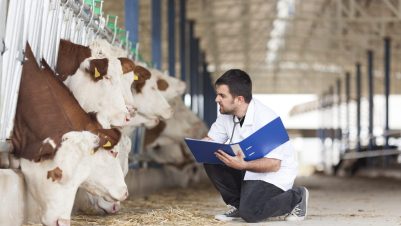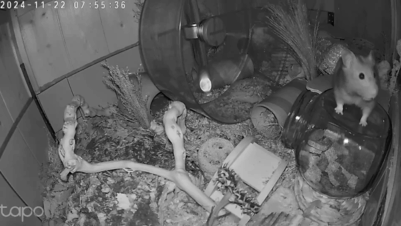BCVA Congress 2019 took place in Southport between 17 and 19 October 2019. There were over 60 presentations, plus 15 workshops and 14 posters, the AGM, 39 commercial and other exhibitors and various social activities, including a fun run. The presentations were spread across four locations within the Southport conference centre. It was necessary to plan to attend the topics of most interest and delegates were often seen rushing from one talk to another, stopping to grab a coffee en route. The exhibition area was the central hub where everyone gathered for lunch, teas and coffee, general discussion and the opportunity to raise issues with speakers and members of the BCVA Board.
The keynote address by Chris Moon reflected the changing situations facing individuals. The speaker’s background is readily attributable as he stood before delegates. Clearly upright, clearly motivated and clearly relaxed with himself and others, he does not allow his history of clearing mines, losing an arm and a leg and running the London Marathon within a year of rising from the hospital bed define his approach to life. The explosion happened some 25 years ago, but with him pointing out that “getting my head in the right place” and recognising that he “never wanted to be a professional harpist anyway”, a deep sense of humour was evident from the start.
The first awareness challenges to the delegates were “what’s the point of life, find your reasons”, “what am I going to do to be more enthusiastic?” and “the price of negativity is too high to pay”. There was talk of enjoying the journey of life, not just surviving it. An interesting technical point was raised that “when we are truly grateful the body produces endorphins” and that “belief in yourself is extremely powerful.” The speaker also recognised the value of help to accept, adapt and act to the situations that arise. His view is that smiling a lot is one of the key life skills. It was intended that the passion demonstrated by Chris Moon would make members of the BCVA reflect on what is important in their own personal and professional lives and he certainly started Congress effectively.

Use of medicines in agriculture
There was much talk and discussion about medicines. Setting the scene, Catherine McLaughlin gave an update on the Responsible Use of Medicines in Agriculture (RUMA) task force performance, highlighting that the use of vaccines is increasing and the use of antibiotics falling. An important aspect is farmer training and Grace O’Gorman, from the National Office of Animal Health, detailed the Animal Medicine Best Practice Programme (AMBP). The Red Tractor Farm Assured Dairy Standards include farmer training, with online and workshop aspects and a certificate signed and dated by a veterinary surgeon. The Veterinary Resource Centre has materials available to veterinary practices to support their farmer clients. Other initiatives are also available, with MilkSure for dairy farmers and their vets well established and a series of workshops on the use of the prescribing cascade to stay safe and legal now ongoing.
Lisette Smeele reviewed the progress achieved by the Dutch dairy industry in the responsible use of antibiotics. Since the policy change in 2011, veterinary surgeons agree that their prescribing has improved and that third and fourth generation cephalosporins are not used now. The relationship between the vet and the farmer has changed and veterinary surgeons see animals more frequently. The vet develops a step-by-step prescribing formulary with the client and it is important to keep this formulary up to date.
However, farmers have a daily defined dose per animal per year as a benchmark indicator and some farmers delay treatment, hoping for self-cure, rather than treat and risk raising their benchmark. The point is emphasised that the responsible use of medicines is not just about antibiotic use reduction, but that animal health and welfare should be the primary goal.
New technologies
There is an increasing emphasis on technology to help the vet and the farmer achieve the details needed to fulfil all the requirements of medicine use. Phil Sketchley and Andy Biggs challenged veterinary practices to know how prescribed medicines are being used on-farm and then offered a Farm Medicine Tracker (FMT) application to solve any awareness gap. It was indicated that an audit trail is made available from wholesaler to veterinary practice to the farmer and the individual animal. The vet is able to scan in the medicine to have details of use with a Virtual Medicine Cabinet that provides a warning if the use is going into the cascade. Scanning the Global Trade Item Number (GTIN) for the product provides a cross reference to the Summary of Product Characteristics (SPC) within the NOAH Compendium. The farmer inputs into a mobile phone what is administered, the animal and an estimate of weight. The medicine use can be exported to a treatment calendar, a treatment reminder generated and the farm medicines book updated with indications when residues are safe for milk to the tank or meat after slaughter. Use of the FMT is expected to provide an audit for the farmer and also protect the farmer from cascade errors. The practice will receive more information and full stock control from practice to farm will be available, with no duplication of recording for the farmer.
Antimicrobial-resistant E. coli study
A study to identify on-farm risk factors for antimicrobialresistant E. coli in the environment of pre-weaned dairy calves was described by David Barrett, on behalf of a team from Bristol Veterinary School. Analysis of faecally contaminated floor samples from the areas where pre-weaned calves were housed showed widespread occurrence of the CTX-M gene. This gene confers resistance to antibiotics and is transferable from one bacterium to another. The then antimicrobial-resistant organism is spread from animals to humans and humans to animals. Calves show a higher level of resistant genes than adult cows and more resistance is found in the summer than the winter. On farms where the water troughs were cleaned daily, they were half as likely to have CTX-M gene containing E. coli. The use of dry cow therapy (cefotaxime) within the past six months yielded more resistant samples. The study indicates that minimising antibiotic use and limiting the opportunities for bacteria to proliferate and spread around the farm should reduce the level of resistance. Further work is planned to offer veterinary surgeons targeted interventions to reduce the potential for CTX-M transmission on-farm and from animals to humans.











